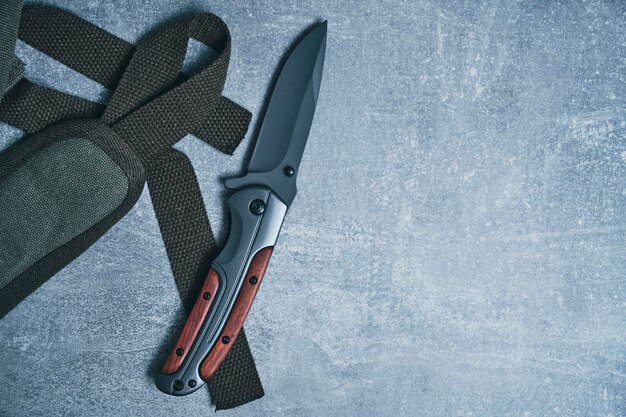Do you know what to do when you’re truly alone?
You step off the trail. The wind shifts. Hours pass, and the path disappears. No signal. No backup. Just you and whatever gear you packed. If you’re used to company, solo trips can feel quiet. But when something goes wrong, that quiet turns cold.
This is where most panic sets in. Because most people only realize they’re unprepared when it’s already too late. That’s why wilderness survival techniques aren’t optional, they’re your safety line. Your decisions matter more when you’re the only one around. This guide is not theory. These are hard-learned, tested, real skills that save solo lives.
Solo Survival Begins Before You Step Out
You don’t start surviving when things go wrong. You start long before that, during packing, planning, and thinking through risk. Solo trips are rising fast, especially among travelers over 55. That means more people are stepping into the wild alone, and more need solid wilderness survival techniques they can count on.
Shelter Setup That Doesn’t Waste Time
You can’t always count on fair weather. So your shelter plan must be fast, easy, and doable alone. The debris hut is your go-to. Use branches, leaves, and forest floor materials. Stack tight. Insulate underneath. Add a windbreak. Keep it small, just big enough for your body.
Tarps are light and versatile. Practice rigging an A-frame setup using paracord and trees. Don’t wait for night to build. Shelter is your first priority after water.
Water Collection Without Tools
Dehydration hits hard and fast. Clean water may not be near. Learn simple methods like:
- Boiling with a single-wall metal cup
- Making a solar still using plastic sheet, container, and heat
- Creating a charcoal-sand filter from natural materials
- Carrying chlorine dioxide tablets in every kit
You don’t need fancy gear. You need backup plans. Always assume surface water is unsafe.
Fire craft When Conditions Are Against You
Wet air, cold hands, and zero sunlight, fire is still possible. Carry a ferromagnetic rod. Add cotton balls soaked in petroleum jelly to your kit. These burn long enough to dry damp kindling.
Make feather sticks using a sturdy knife. Find dry tinder inside bark or from dead branches off the ground. Protect your fire from wind with rocks or logs. Fire keeps you alive, calm, and visible.
Know Your Terrain Without Electronics
Tech fails. You should not. Learn to use natural cues, the sun’s arc, moss, water flow direction. Practice using a compass and map even in your local woods. Dead reckoning helps track distance walked. Log your steps. Look for landmarks.
Stack small stones or tie cloth bits as trail markers. Don’t move fast. Move smart. Staying found is better than getting lost and hoping to be found.
Smart Packing: Weight vs. Value
| Item | Why Carry It |
| Ferro rod | Reliable spark in any condition |
| Compact tarp | Quick shelter or rain catchment |
| 550 paracord | Versatile for traps, shelter, gear fix |
| Water tablets | Light, effective, and fast purification |
| Folding knife | All-purpose cutting tool |
| Metal cup | Boils water, cooks, signals |
| Duct tape | Repairs fabric, tools, or wounds |
| Compact saw | Safer than axe for solo cutting |
| Emergency blanket | Prevents heat loss, shock aid |
Avoid extra. Carry tools with multiple uses. Efficiency is survival.
Predict Wildlife Encounters
Before your trip, research native animals. Know which are territorial, aggressive, or venomous. Always store food at least 200 feet away from your sleeping site. Hang it or use bear canisters. Carry bear spray only if you know how to reach and use it in seconds.
Insect threats get ignored. But bug bites cause sleep loss, infection, even disease. Use a permethrin-treated net or repellent cream. Mosquitoes, ticks, and leeches can wear you down quicker than weather.
Field First Aid Without Panic
Twisting an ankle or cutting your palm can escalate alone. You need to be able to act without seeing the injury fully. Practice splinting your leg using sticks and your shirt. Know how to apply pressure and elevate wounds. Watch for signs of infection.
Always carry:
- Gauze pads
- Medical tape
- Antiseptic wipes
- Painkillers
- Tourniquet strap (last resort only)
Learn how to treat yourself one-handed. Because that might be the only option.
Mind Survival: Quiet Can Be Loud
Isolation messes with your mind. The silence, especially at night, can get under your skin. Create structure, time for fire, food, checking surroundings. Talking out loud keeps your thinking focused. Mark days on bark or stone.
Think in hours, not days. Track progress. Break tasks down. Keep hands and brain busy. Boredom leads to panic. Movement keeps it away.
Final Thoughts
We believe survival shouldn’t depend on luck. We build content and tools tested by real users in real woods. We back every post with expert thinking and straight facts. And we act with one goal, preparing you for a time when help won’t come.
Explore more wilderness survival techniques now at Trek Fuse.



